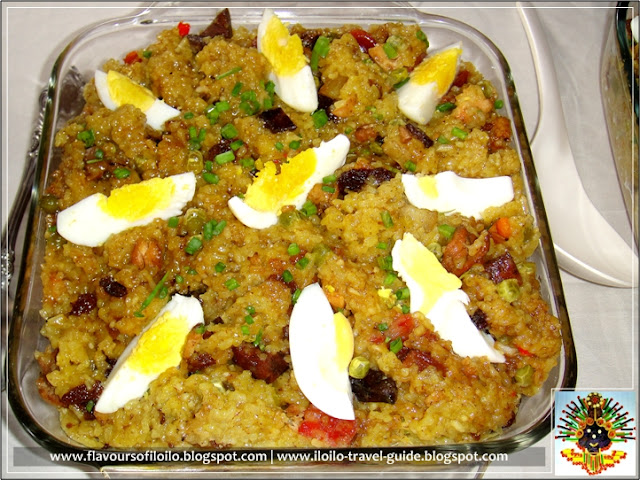Another Pista Minatay has come and gone; and as always the complete "yellow rice" staple called valenciana will have its gastronomic presence felt.
Part of the malagkit delicacies served during Undas, together with ibos/suman, kalamay hati, alupe, linugaw and a lot more, valenciana stands out.
Basically, completing the "go, grow and glow" requirements, it has the carbohydrates, protein and vitamins & minerals in just one spoonful.
And it can come in its simplest form, like the one below, with just malagkit rice, pork, chorzio and bell peppers to some fancy with additions liek raisins, peas, chicken, hardboiled egg (just garnish though), etc. But NO hotdogs, please...
The recipe is just simple for it only involves 1) Sauteeing (Just gisa the pork, chicken, peas, chorizo bellpeppers, etc); and 2) Cooking malagkit Rice (Cook sticky rice with turmeric then add some broth cubes for added flavour.
When its halfway cooked, mix the sauteed ingredients, making sure of even mixing and wait for it to be fully cooked). Just garnish with hardboiled eggs, onion leaves, etc and serve.
When its halfway cooked, mix the sauteed ingredients, making sure of even mixing and wait for it to be fully cooked). Just garnish with hardboiled eggs, onion leaves, etc and serve.
It may sound simple but takes a lot of practice and maybe some burned valenciana at first.
The dukot, or the hardened part at the bottom of the pan has also become a quite a delightful spin-off of the dish as some enjoy having it as a flavourful crunchy snack bite.
The dukot, or the hardened part at the bottom of the pan has also become a quite a delightful spin-off of the dish as some enjoy having it as a flavourful crunchy snack bite.
Pista Minatay or not, valenciana is definitely here to stay as Ilonggos primarily love having this complete rice dish.
Maybe because most if not all have grown accustomed of having valenciana in almost all occasions like fiesta, brithdays, reunions and all other occasions thus I love calling it as the "occasional dish".
Maybe because most if not all have grown accustomed of having valenciana in almost all occasions like fiesta, brithdays, reunions and all other occasions thus I love calling it as the "occasional dish".
Please click for Valenciana Recipe in details.




